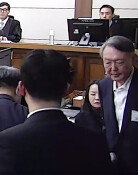Special Admissions to Needy Students Under Fire
Special Admissions to Needy Students Under Fire
Posted April. 22, 2009 07:09,
Two international middle schools opened last year and each selected 32 students from low income families each.
Half of the students whose families receive welfare benefits as members of the lowest income bracket will get free educational costs, including tuition, meals and afterschool program.
The other half will be subsidized depending on their family income: students from families ranking in the bracket right above the lowest will get a tuition exemption of 70 percent, and half of tuition will be subsidized to students from low income families.
The money is a big burden for students from the income bracket just above the lowest. Fees for orientation held before the official start of the international school year is as high as 800,000 won (593 U.S. dollars). If the costs of meals and transportation are included, the fees exceed one million won (741 dollars).
If a student buys the materials necessary for afterschool programs, the cost is more than 300,000 won (222 dollars).
Getting a private scholarship is also hard. Middle school is mandatory so most foundations exclude middle schoolers from scholarship eligibility. There is no other option than receiving a merit-based scholarship from the school.
The Seoul Metropolitan Board of Education last year authorized the establishment of international schools mainly because they will offer scholarships for needy students.
Recipients of basic livelihood security benefits accounted for five percent of all households in the district, a board official said. The percentage of students from socially marginalized groups seems to have exceeded the real percentage to meet the requirements to open an international school.
Schools are also fearful of this. As the share of students from lower-income brackets increases, students who cannot keep up with classes were accepted, they said.
Younghoon International Middle School said, From this year, we will not select students from socially marginalized groups but rather excellent students from low-income families. Because of the limit in supporting students from low-income families, the school said it must raise the bar.
The government sought to build new schools to make up for the flaws of its equity-based education system. As a result, aristocratic schools were opened one after another, and the share of slots for students from unprivileged groups increased as well.
An independent school to be opened in Eunpyeong New Town in Seoul next year will select 20 percent of its students from needy families. The requirement for a school to select 20 percent of its students from needy families has become the norm. Even special purpose schools are trying to follow the rule.
Other independent schools 30 of which will be selected next month will follow suit. One proposal is to form a national scholarship foundation instead of offering financial deficit subsidies to schools designated as independent. In other words, the money that went to a school will instead go to each student. The amount is estimated at two billion won (1.48 million dollars).
Critics, however, said offering five million won (3,705 dollars) per year to all students, an amount equivalent to a tuition at a national university, is excessive.
Im worried that special admission for needy students is making us even more marginalized, the parent of a needy student who got admitted to a school said. It wouldve been much less painful to my child if my child was rejected for economic reasons.
kini@donga.com




![“설거지해도 그대로”…냄비 ‘무지개 얼룩’ 5분 해결법 [알쓸톡]](https://dimg.donga.com/c/138/175/90/1/wps/NEWS/IMAGE/2026/01/15/133164664.3.png)


